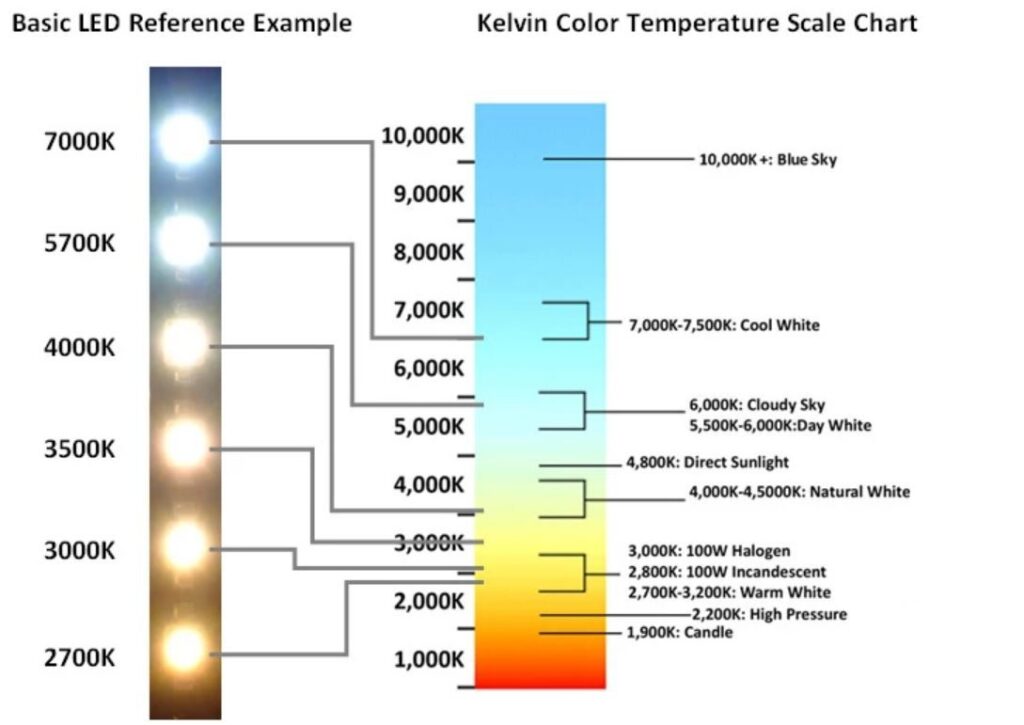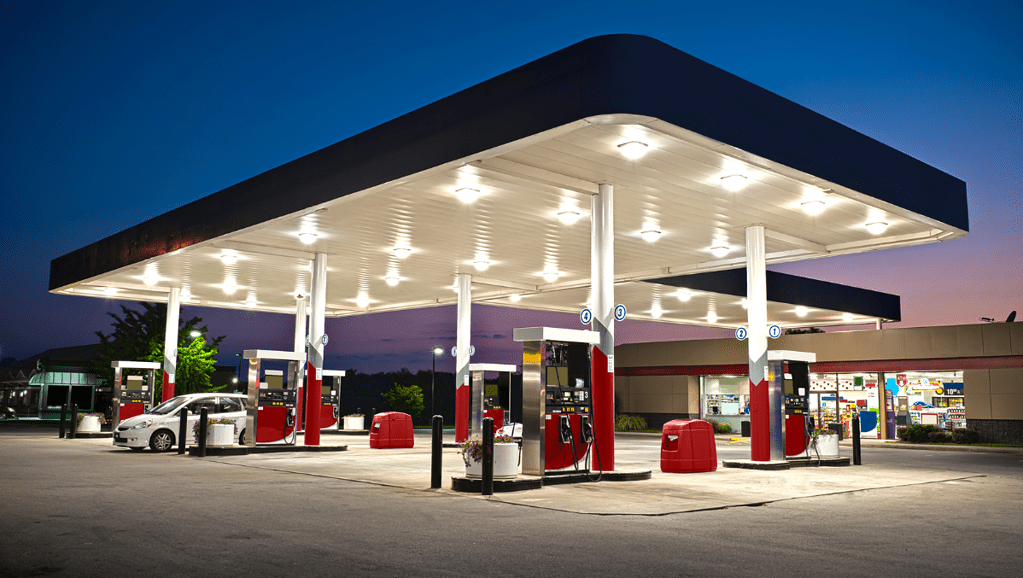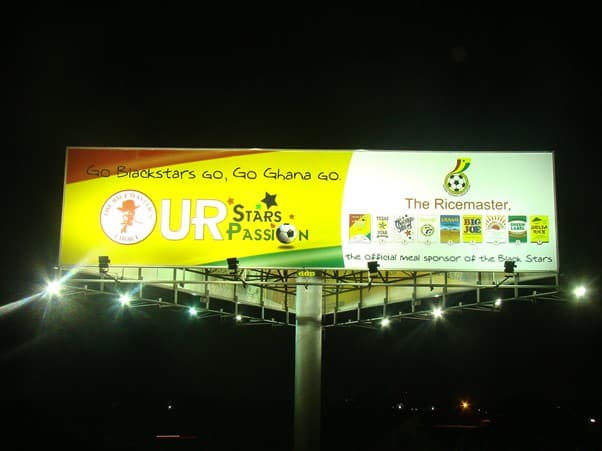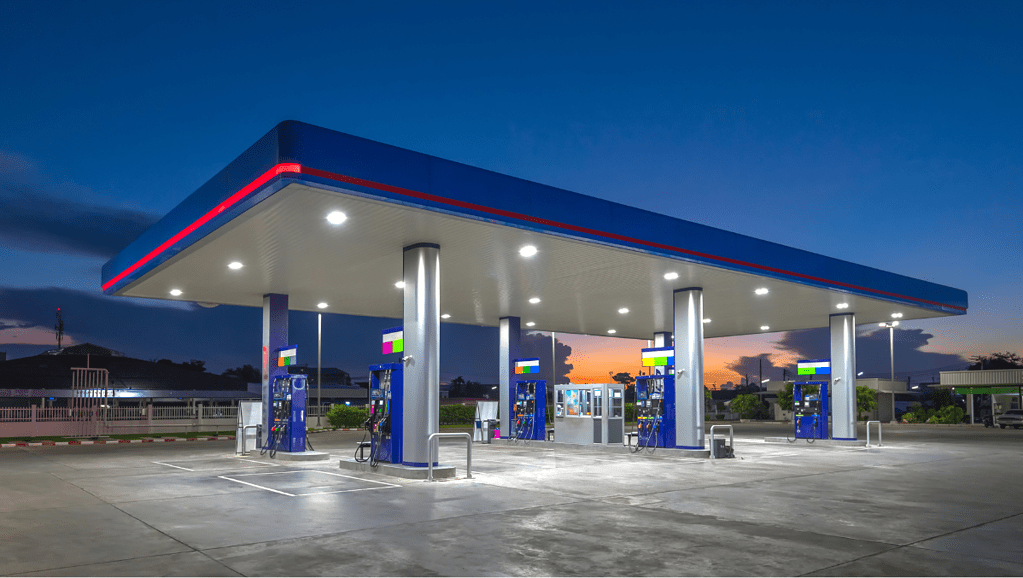Lighting is vital in attracting people to your gas stations, especially in cases where customers pump gas on their own. It should give comfortable and welcoming vibes.
However, many gas station owners fail to grasp the importance of proper lighting, which leads to poor sales, safety hazards, and loss of opportunities.
Here we’ve discussed the most important things you must consider when choosing gas station lighting based on valid research.

6 Critical Things to Consider for Gas Station Lighting
The study shows that better lighting in a gas station encourages drivers to pull over more frequently, resulting in better sales. Customers only stop at gas stations that are welcoming unless it’s an emergency. If that’s the case, investing more time and resources in lighting design only makes sense.
1. Lighting Standards
Gas station lighting needs to follow specific protocols and safety standards—the Illuminating Engineering Society of North America (IES) standardized lighting needs for different projects in the USA.
A gas or fuel station consists of multiple areas, such as a pump island, parking lots, service stations, etc. Each place has a different lighting requirement. Here are some recommendations given by IES.
| IES Gas Station Lighting Recommendations | |||
| Areas | Horizontal Illuminance footcandles (fc) |
Vertical Illuminance | Lux (Average) |
| Gas Pumps | 12.5 | – | 135 |
| Gas Pumps (High Security) | 11-15 | – | 120-160 |
| Rest Rooms | 5 | 3 | 54 |
| Parking Areas (Uncovered) | 1.5 | – | 16 |
| Parking Area (covered) | 5 | 0.8 | 54 |
| Service Areas | 50 | 30 | 540 |
| ATM or Service Kiosk | 20 | 10 | 215 |
Horizontal illuminance refers to lighting in a horizontal plane, like the floor or top of the table. Vertical illuminance lights up vertical planes such as walls.
2. Lighting Requirement
Power
To meet the criteria of IES for proper lighting in the gas station of 11-15 foot candles, you would need 120-150W LED canopy light that gives 6000-18000 lumens.
Older lights like metal halides and fluorescent tubes would need an even higher power to reach the same illumination.
Beam angles
Beam angles are critical for fueling areas because they ensure the meter readings are clear to the people. Larger angles of 120 degrees to 360 degrees are preferable. It helps avoid glare and eye strain.

Spacing
Space between canopy lights in the gas station controls the intensity of illumination. If the distance between the lamps is too small or too large, it will cause uneven light distribution.
The designers use the “spacing-to-mounting height” ratio to avoid glare and poor placement. Its value should be in the range of 1.2 to 1.0 vertically and horizontally. Also, each fueling lane should have its overhead lighting.
Consider a 15 by 15 ft gas station area with a mounting height of 16 ft. It’s ideal to space lights 16 to 19 ft apart and maintain 12.5-foot candles of lighting.
3. Types of Lighting Technologies
Traditionally, high-intensity discharge (HID), metal halide, and fluorescent lighting was the primary lighting source for high-powered illumination like the ones you see in gas stations, stadiums, and halls.
The older technologies are cheap, but they have a few flaws. Take metal halides, for instance. These lights take a few minutes to brighten up and have a low life span. Similarly, halogen lamps produce immense heat, a colossal waste of energy.
Fortunately, LED technology has overcome the major flaws and is now preferred over older lamps.
Here we’ve summarized essential technologies used in canopy fixtures and their benefits for you to get an overview.
| Features | LED | HID | Fluorescent | Induction |
| Energy-efficient | Yes | Medium | Medium | Yes |
| Operational Cost | Low | High | Medium | Low |
| Initial Cost | High | Low | Low | Low |
| Lifespan | Highest | High | Medium | High |
| Brightness | Highest | High | Medium | High |
| Eco-friendly | Yes | No | No | Yes |
| Compact Size | Yes | Yes | Yes | No |
| Durability | High | Medium | Medium | Low |
| Color Temperature | Many options | Some options | Limited | Some options |
| CRI Values | Highest | Medium to High | Medium | Medium |
4. Canopy Lighting
Canopy lights are the go-to lights for a gas station. Such lights are best suited for outdoor exterior lighting design, mostly hung over beams with or without ceilings. Canopy lights have a protective casing called a canopy.
Explosion-proof Lights
Explosion-proof lights have a fixture that contains any spark originating from the lamp that could potentially ignite any flammable gas vapor. Occupational Safety and Health Administration (OSHA) certifies such lights for any hazardous place, like a gas station.
Waterproof Lights
Waterproof canopy lights with IP65 ratings are your best choice because they are immune to rain, storms, and humidity. These durable fixtures are robust, increasing the life span of luminaire manifolds. Since gas stations are exposed to open areas without any wall boundaries, these fueling stations can get damaged due to violent protests or vandalism. For secure and safe lighting, it’s recommended to use IP65 or higher-rated lights.
Though these canopy lights are durable, they are also expensive. But the low maintenance cost makes up for the initial cost whiting the first year of use.
Task Lights
Most gas pumps don’t require specialized task lighting, but for areas where the mounting height is too high or the weather remains too cloudy, it’s better to add task lights for the customer’s comfort. Popular task light options are spotlights and track lights.
5. Functional Lighting
What separates ordinary lighting from extraordinary is the attention given to small details. The best way to improve gas station lighting is by partitioning lights into different sections—separate lights for a parking lot, pump island, car wash, convenience store, etc.
The refueling should have bright lighting, like canopy lights. For indoor lighting, it’s good to use the panel, flood, spot, and recessed lights.
Moreover, you can use indirect lighting to reduce glare and harsh lighting. For indirect lighting, the designers use a reflective surface on the ceiling to reflect light creating a smooth light-washing effect.
6. Color Temperature and CRI
Colors breathe life into the otherwise boring lighting design of a place. Modern luminaires come in various colors that you can use to create a welcoming ambiance. Use red, blue, and green colors to create great customer visual appeal.

Colors make so much impact that some gas stations have started to use blue lights in their restrooms to restrict drug use. Research shows that blue lights make it harder for addicts to locate their veins and hinder substance use.
Cool color temperatures ranging from 4000K to 6000K are more inviting than dull yellowish temperatures. These cool white lights also give a sense of security and comfort, especially late at night. Moreover, fuel stations need bright lights with a CRI value greater than 80. CRI determines the ability of light to reflect the right colors.
Most Effective Lighting Types for Gas Stations
Canopy Lights
We discussed the importance of gas station canopy lights in the previous section. Let’s explore some subcategories of these practical lights. First is surface-mounted canopy lights. These lights have a square or rectangular fixture that sticks to the ceiling. The fixture is visible and adds to the aesthetics of the place.
Another popular type is a recessed mount canopy fixture installed inside the ceiling, giving a minimalistic look.
Some gas stations have smaller ceiling heights. For such places, we recommend low bay canopy lights.

Panel Lights
Panel lights are rectangular fixtures that host one or two lamps. These are best suited for convenience stores, service areas, and restrooms. Panel lights are energy efficient and best suited for general lighting.
Post lights
Floodlights, called post lights, are the best for parking lot lighting in gas stations. It adds to overall lighting making the surrounding gas station much safer.
Billboard Lights
Gas stations are an excellent place for advertisement because it’s always busy with lots of potential customers. Billboard lights are best if you want commercial lighting and to make some money through advertising.

Benefits of Choosing LEDs for Gas Stations
Here are some amazing benefits that convince you to use LEDs for your business.
Energy Consumption
Modern fuel pumps run 24/7 and 365 days a year, so it’s only natural they consume a lot of energy. This can quickly ramp up your electricity bills. LEDs consume 80% less energy than fluorescent, metal halides, and halogen lamps. Making LED canopy lights extremely cost-effective despite their initial high price.
Moreover, many utility companies in the USA offer energy rebate programs for owners that plan to install environmentally friendly lighting systems. This benefit alone is enough for higher profits from your gas station.
Low-Maintenance
Gas station lights are mounted on heights usually greater than 15 ft, making repair and maintenance harder. Often third-party contractors are hired to replace the faulty lamps in the gas station, which adds to the operational cost. Not to mention the inconvenience to the customers who may not have proper illumination during repairs.
High-quality led lighting can last from 50,000 to 100,000 hours, significantly reducing operating costs.
Extreme Weathers
LEDs are also resistant to extreme weather, heat, and humidity, making them ideal for outdoor lighting. Unlike fluorescent lights, which take longer to start in extreme cold, these LEDs become even more efficient.
Low Voltage
LED canopy lights can operate on low voltages because they require less power than traditional lamps. So much so that LEDs can run on only 5% of their recommended voltage. You can easily run all your lights on a backup generator in case of power outages. Being able to run on low voltage also adds dimming capability to the mix.

Variety of Features
LED canopy lights host many exciting lighting control systems, which make them desirable. You can buy smart LEDs with a time clock function that automatically switches ON and OFF depending on the time of the day. Some LED canopy lights even have backup batteries in a power outage.
These lights also come in various colors and temperatures, giving room to be creative with the design. You can add different colors to represent your brand, making your fuel stations stand out from the rest. LEDs also have higher CRI values than traditional lighting solutions, such as metal halides, high-intensity discharge (HID), and fluorescent lamps.
Better Quality
LED canopies have vast beam angles and bright light. Unlike older lamps, these advanced LED fixtures have angles ranging from 120 degrees to 360 degrees. LEDs also produce greater lumens while consuming far less wattage.
Concluding Thoughts
We’ve summarized the basics of gas station lighting in this article. Following the above guideline will act as the starting point for proper lighting. Even if you hire a third-party contractor, you will still know what proper lighting in a gas station looks like. Make sure you meet the lighting standards. Understand the basics of different lighting technologies and see what best suits your budget. We recommend high-quality canopy fixtures with LED lamps if you want the best value for your money.
Want the Best Gas Station Lighting Solution for Business?
No matter how much time and effort you put into the lighting design, it won’t amount to much if you invest in low-quality lighting products.
RC Lighting provides you with high-quality luminaires that comply with international quality standards. We use premium quality raw materials to make outstanding luminaires that have a long lifespan so that you don’t waste money on maintenance.
Leading industry experts supervise our high-tech manufacturing plants and ensure the product’s quality and design match modern lighting needs. We serve our satisfied customers all across the globe and help them reach their highest potential.
You can choose from our vast catalog of recessed, canopy, flood, spot, and panel LED lights.
We also deliver customized lighting fixtures upon the customer’s demand at competitive market rates.
So, what are you waiting for? Get in touch with our 24/7 helpful customer service and get a FREE evaluation of your project NOW.



